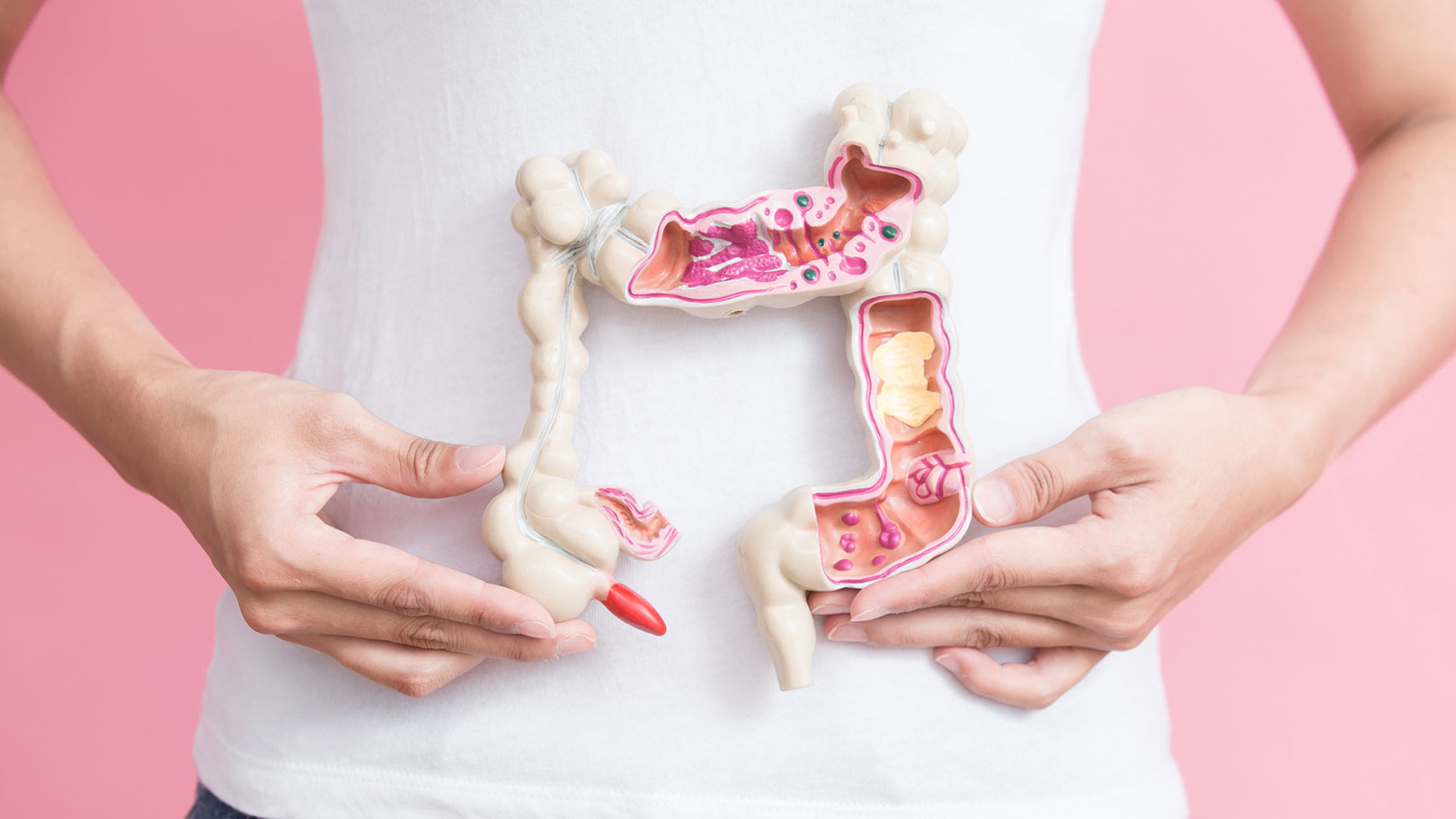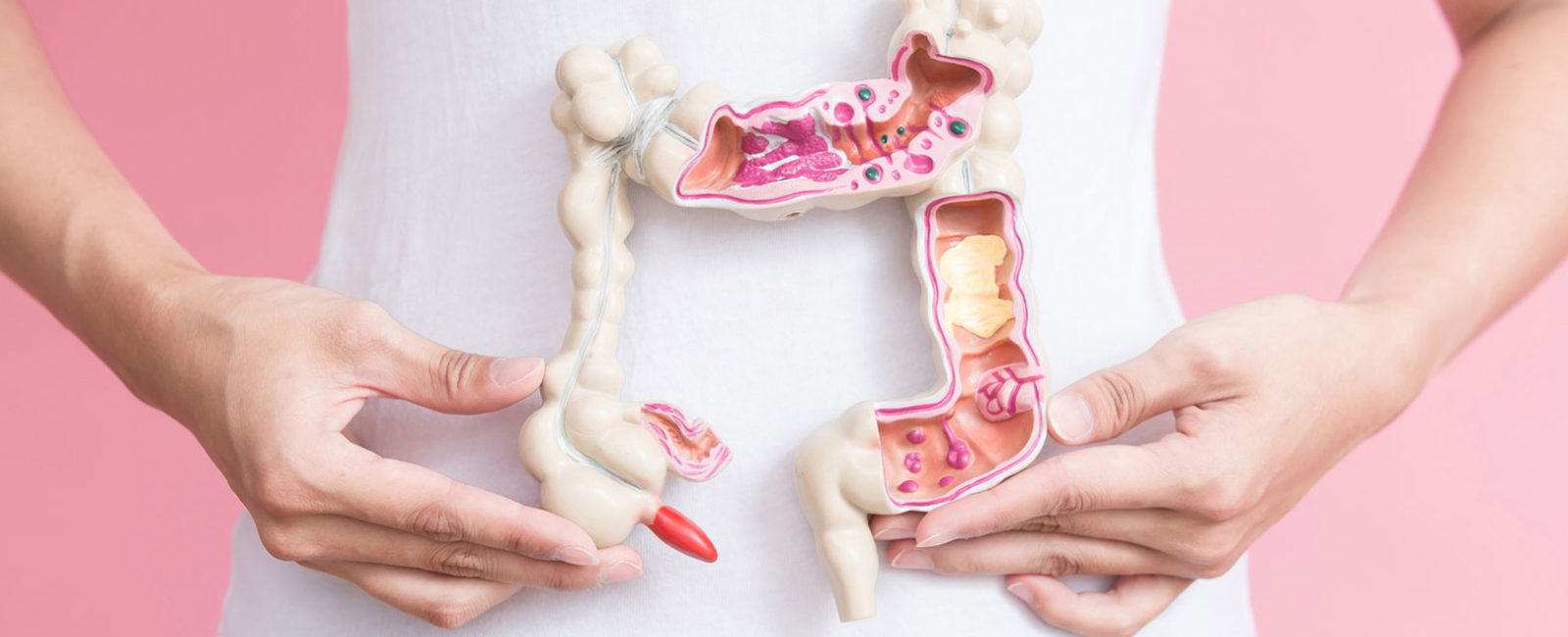Gastrointestinal diseases are among the most common infectious diseases. If the mucous membranes of the stomach and intestines are inflamed, [...]

Intestinal flora – what is it actually?
Intestinal flora – what is it actually?
Such a flowery word – intestinal flora. It has nothing to do with flowers or plants. However, in the past, people thought that bacteria belonged to plants. But nowadays we know that bacteria are a way of life on their own. That’s why you would have to say something like „microorganism community“ instead of intestinal flora. It consists of billions of microorganisms such as various bacterial strains, viruses, and fungi. Together they form a very complex system in your digestive tract. At least 400 different types of bacteria live in your intestinal wall. If you put them all together on a scale, they can weigh up to 2 kilograms. The composition of your intestinal flora is as unique as your fingerprint because there are certain factors that determine it: how you were born, how you were fed as an infant, how the intestinal flora of your parents and relatives is composed, whether you have received medication and how you live today.

At first, there’s not much going on in the intestine
When we are born, we immediately become acquainted with billions of new beings: bacteria. They provide a strong immune system for the newborn. Science has assumed that our intestines are initially sterile. Recent studies found out that there are a few bacteria already in the intestines of the fetus. They are said to have a composition similar to the mother’s oral flora and are believed to enter the intestine through the amniotic fluid.
Our first intestinal flora blossoms when we are born. It may sound a little strange, but the first load of bacteria is absorbed by the baby through the mouth from the mother’s vaginal flora. When it is pressed through the birth canal, it makes contact with the bacteria, which then move on to the intestine. These are mainly the lactic acid producing bifidobacteria and lactobacilli. Other bacteria that help to determine the unique composition of the intestinal flora are added through skin contact with the mother and the environment in which the child is born. If a child is born by cesarean section, the first contact with the mother’s vaginal flora is missing. The intestinal flora of these children looks different because it can only be colonized by bacteria from the mother’s skin and the environment. Researchers suspect that these children will later be more susceptible to diseases such as allergies or asthma, but more studies are being carried out. There is also something else that is very important, that is also related to the composition of the intestinal flora.
Mother’s milk determines the baby’s intestinal flora
Whether it was a natural birth or cesarean section, the mother’s milk will restore it if the intestinal flora is not yet optimally built up. If babies are breastfed, the young intestinal flora continues to expand. Breastmilk consists mostly of bifidobacteria. These mainly strengthen the immune system. So pathogenic germs are particularly diligent fended off. Anyone who has not been breastfed and belongs to the so-called bottle-fed children already has the intestinal flora of an adult as a baby. This contains more different bacterial strains, but fewer bifidobacteria. However, these are particularly important in order to keep the environment in the intestine as acidic as possible. When babies eat their first porridge, the intestinal flora changes again. Now all fibers from fruit and vegetables must also be processed in the intestine. This makes the intestinal flora “adult” and there is hardly any difference between bottle-fed children and breastfed children.
what is gut flora? When the intestinal flora grows up …
The intestinal flora of an adult consists of 99 percent of four big bacterial groups (“divisions”), namely Firmicutes, Bacteroidetes, Proteobacteria, and Actinobacteria. Most bacteria live in the colon. They are so-called obligate anaerobes, i.e. they do not need oxygen to survive. It can even kill them. In the less populated small intestine, anaerobic bacteria live. They can live in both oxygen-poor and oxygen-rich conditions. This sophisticated ecosystem has many functions. Your intestine, with its many small microbes, primarily processes food. The microorganisms tear the food apart and extract valuable vitamins and minerals. For example, the body can only produce fat-soluble vitamin K if the intestinal flora cooperates. Among other things, vitamin K is relevant for bone formation and blood clotting. So our whole body is supplied with everything that’s important. In addition, the intestinal flora prevents the spread of pathogens and inflammations, stimulates intestinal movement and protects you from toxic substances that you ingest through the environment or your food.
What is gut flora? How your lifestyle affects your intestinal flora?
Depending on your diet, your intestinal flora changes – positively or negatively. An ideal diet for your intestines is rich in fiber, including fruit, vegetables, cereals and lactic acid products such as natural yogurt and fermented sauerkraut. The more you move, the better your intestines can digest what you give them, because the movement keeps the peristalsis in motion. Too much sugar, alcohol, animal fats, stress, medication, and processed food can mess up your intestinal flora. The symptoms are not so nice: flatulence, abdominal pain, diarrhea or constipation. Besides, an unbalanced intestinal flora also affects your metabolism and thus your weight, your nutrient balance, and your immune system. So be good to your intestinal flora. Build it up if you must take medication, are sick or have too much stress. You can find out what your intestinal flora is like with the INTEST.pro. Among other things, the results tell you how your intestinal flora is composed. Are there too many bacteria in one group and perhaps too few in another? With probiotics, you can then rebuild your intestinal flora just as much as your organisms need it.



